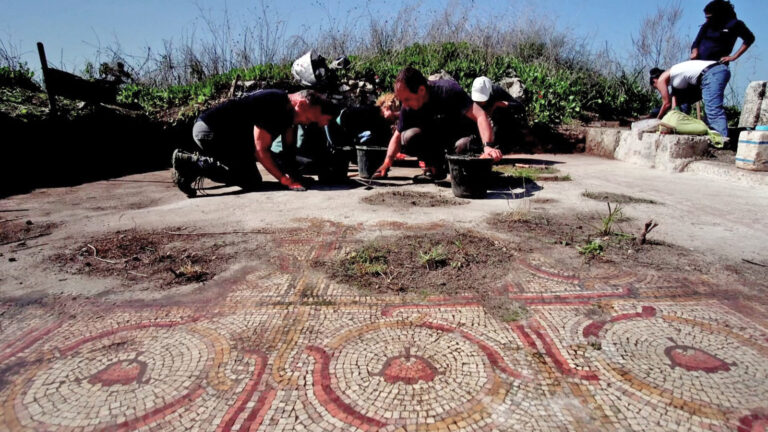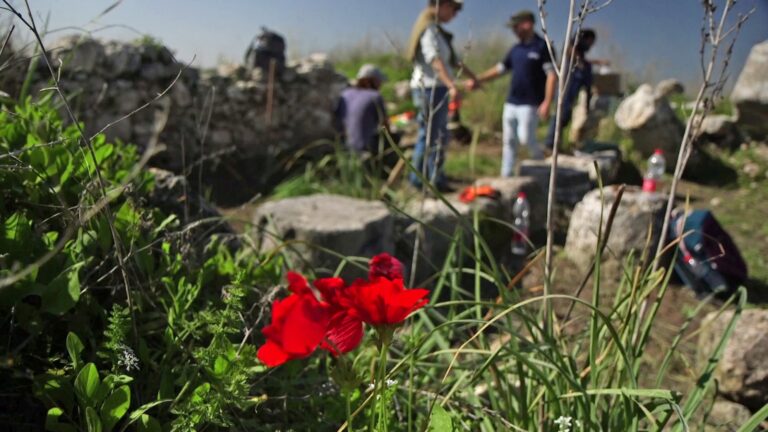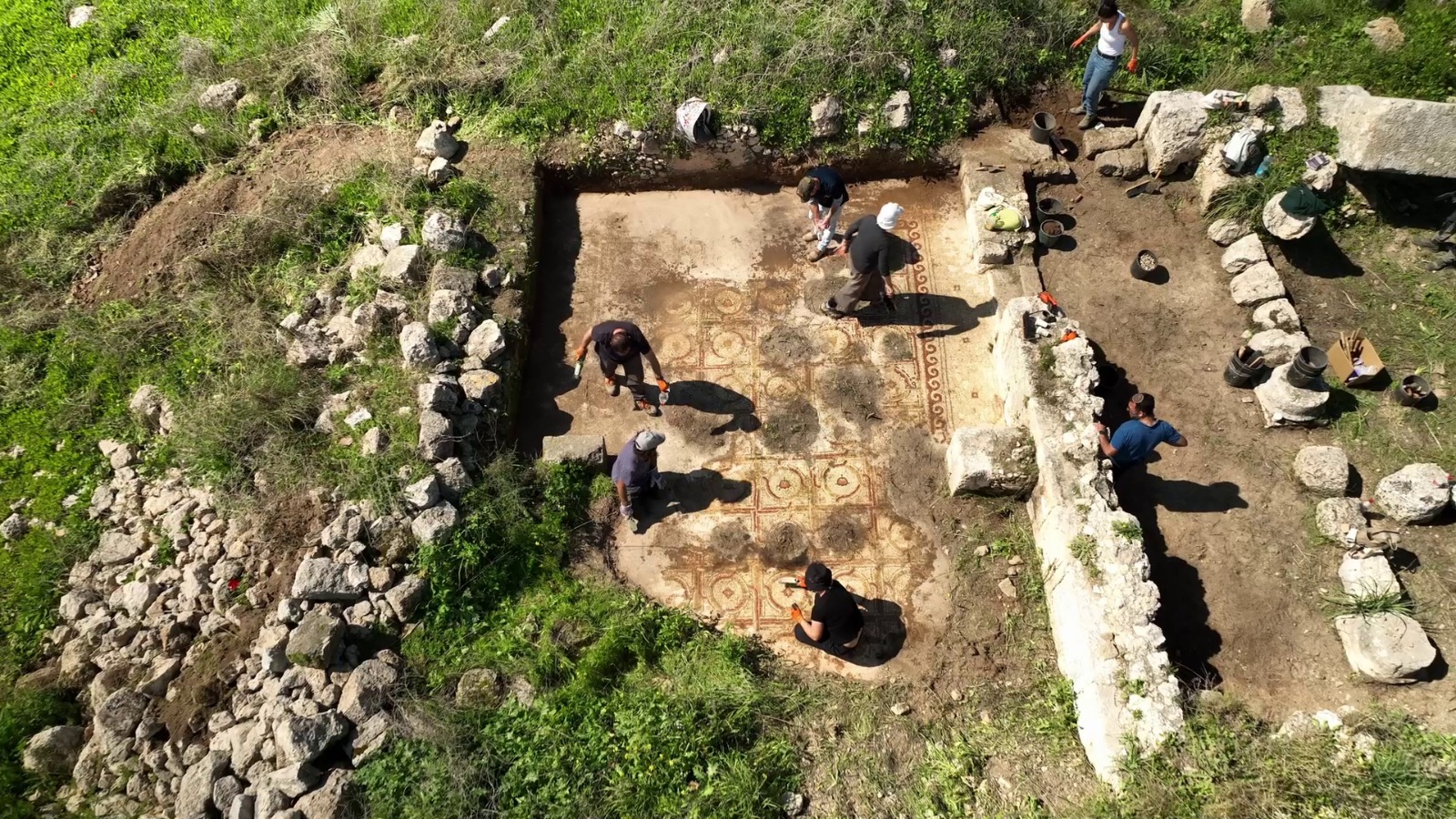An ancient mosaic floor dating back to the Byzantine era has been unearthed in central Israel, showcasing a colorful flower design that complements the abundant nature around it.
The archeological site, called Horvat El-Bira, was excavated in the 1980s but left untouched since. Now, the Israel Antiquities Authority decided to dig it up once again and utilize its location right next to its new offices and the popular Israel Trail.
The area originally contained a Roman-era rural villa, identified by the remains of agricultural installations and buildings visible today. In the Byzantine period, a church was established at the top of the hill, where the colorful floor mosaics were now uncovered.

The church, according to the IAA, was one of several sites along an ancient road connecting the coastal area to the Judean lowlands that provided visitors with a place for rest and prayer. Its renovation, meanwhile, includes a new seating area for more modern travelers – hikers and local residents.
“When we first came to the site, the mosaic was covered over with earth and weeds,” says Yair Amitzur, the director of the IAA’s Central Region Education Department. “Over the past month, we’ve been uncovering and cleaning up the site together with the local community.”
Amitzur noted that the archeologists “are working here among a carpet of flowering anemones. One can just imagine that the artist of the flower-adorned mosaic was inspired by the surroundings.”

Israel Trail hikers will be able to stop here, replenish their water supplies, drink a cup of coffee and on the way, receive an explanation on the site.
Fighting for Israel's truth
We cover what makes life in Israel so special — it's people. A non-profit organization, ISRAEL21c's team of journalists are committed to telling stories that humanize Israelis and show their positive impact on our world. You can bring these stories to life by making a donation of $6/month.








